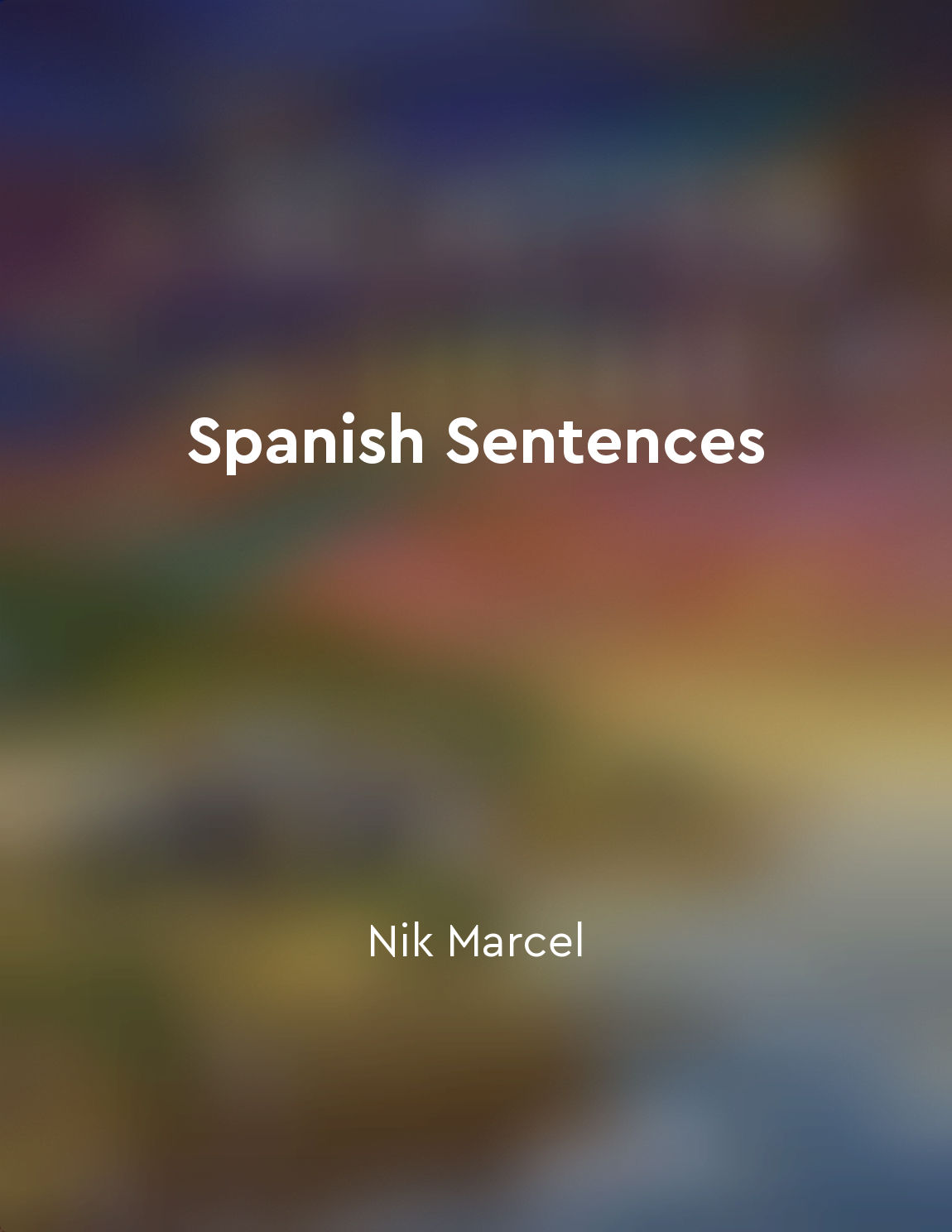The future tense is used for actions yet to occur from "summary" of The Everything Spanish Grammar Book by Julie Gutin
When we talk about the future in Spanish, we use a specific verb tense called the future tense. This tense is used to talk about actions that have not happened yet, but will occur at some point in the future. It is important to remember that the future tense is not used to talk about actions that are currently happening or have already happened. The future tense in Spanish is formed by adding specific endings to the infinitive form of the verb. For regular verbs, the endings are -é, -ás, -á, -emos, -éis, and -án. For example, the verb hablar (to speak) would become hablaré, hablarás, hablará, hablaremos, hablaréis, and hablarán in the future tense. It is also important to note that there are some irregular verbs in Spanish that do not follow the regular pattern when conjugated in the future tense. Some common irregular verbs include tener (to have), poder (to be able), and salir (to leave). For example, the future tense of tener is tendré, tendrás, tendrá, tendremos, tendréis, and tendrán. In addition to talking about future actions, the future tense can also be used to make predictions or to express probability. For example, "Mañana lloverá" means "It will rain tomorrow" and "Creo que ganarás el partido" means "I think you will win the game."- The future tense is a crucial part of Spanish grammar that allows us to talk about actions that have not yet occurred. By understanding how to form and use the future tense, you can confidently express future actions, predictions, and probabilities in Spanish.
Similar Posts
Offering help and showing gratitude
When you want to assist someone, it's important to offer your help in a polite and respectful manner. In Spanish, you can say "...

Understanding sentence types is crucial
To be able to effectively communicate in English, one must have a good understanding of the different types of sentences. It is...
A comprehensive resource for Spanish learners
If you're learning Spanish, you need a resource that covers all aspects of the language. You need something that will help you ...

Offering insights into common mistakes
This book is designed to help you improve your English grammar by highlighting common mistakes that learners often make. By poi...
Master Mexican Spanish in no time
Are you ready to speak Mexican Spanish with confidence and fluency in just a few minutes a day? The key to mastering Mexican Sp...
Practical phrases for traveling in Latin America
When traveling in Latin America, it is essential to have practical phrases at your disposal to effectively communicate with loc...

Direct and indirect objects in Spanish change the meaning of sentences
The presence of direct and indirect objects in Spanish can significantly alter the meaning of a sentence. These objects play a ...
Embracing the diversity of Spanish verb meanings
When delving into the vast world of Spanish verbs, one must be prepared to encounter a wide array of meanings for each verb. Th...
Clear explanations and translations
The stories in this collection have been carefully crafted to provide simple, clear explanations and translations to help begin...

